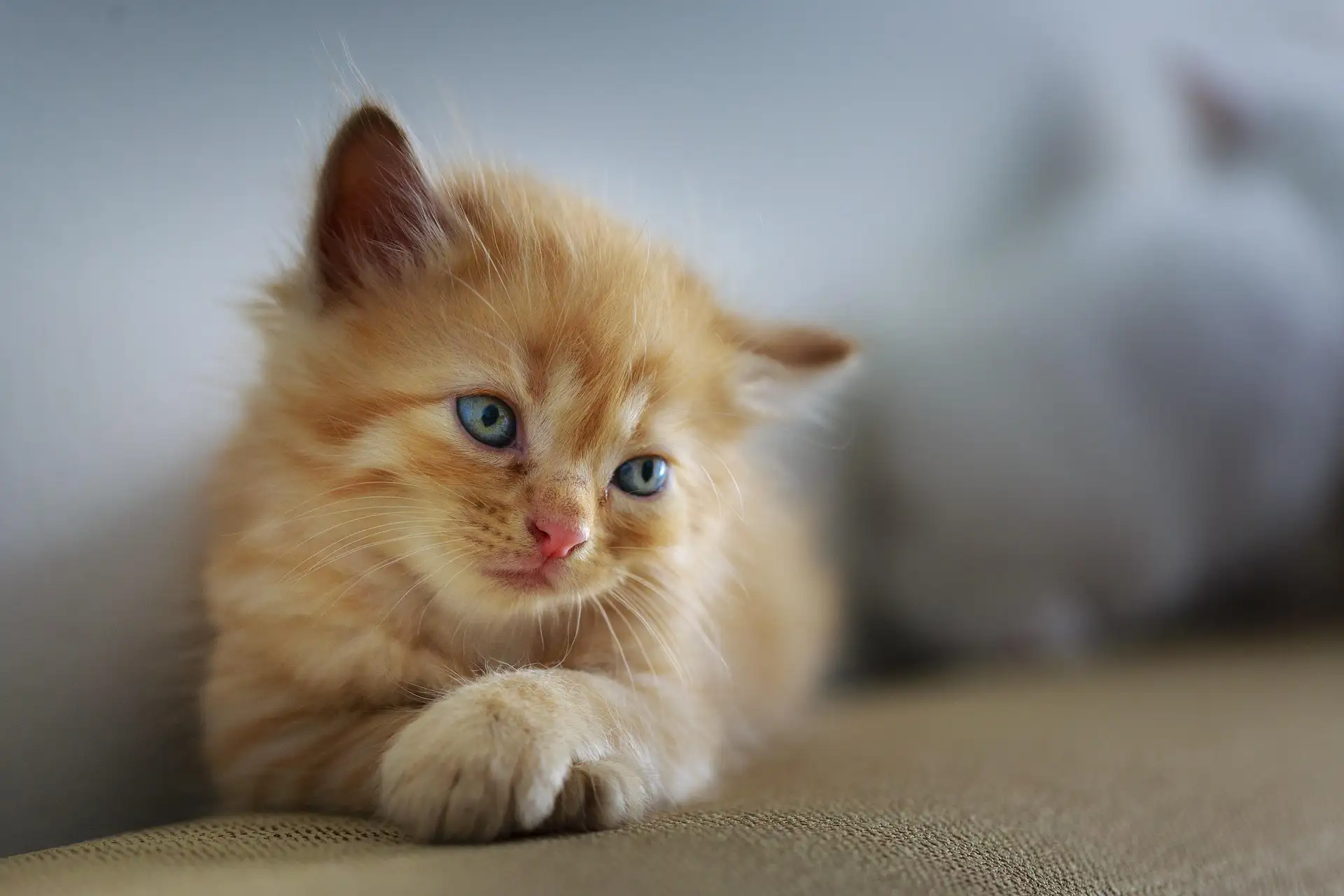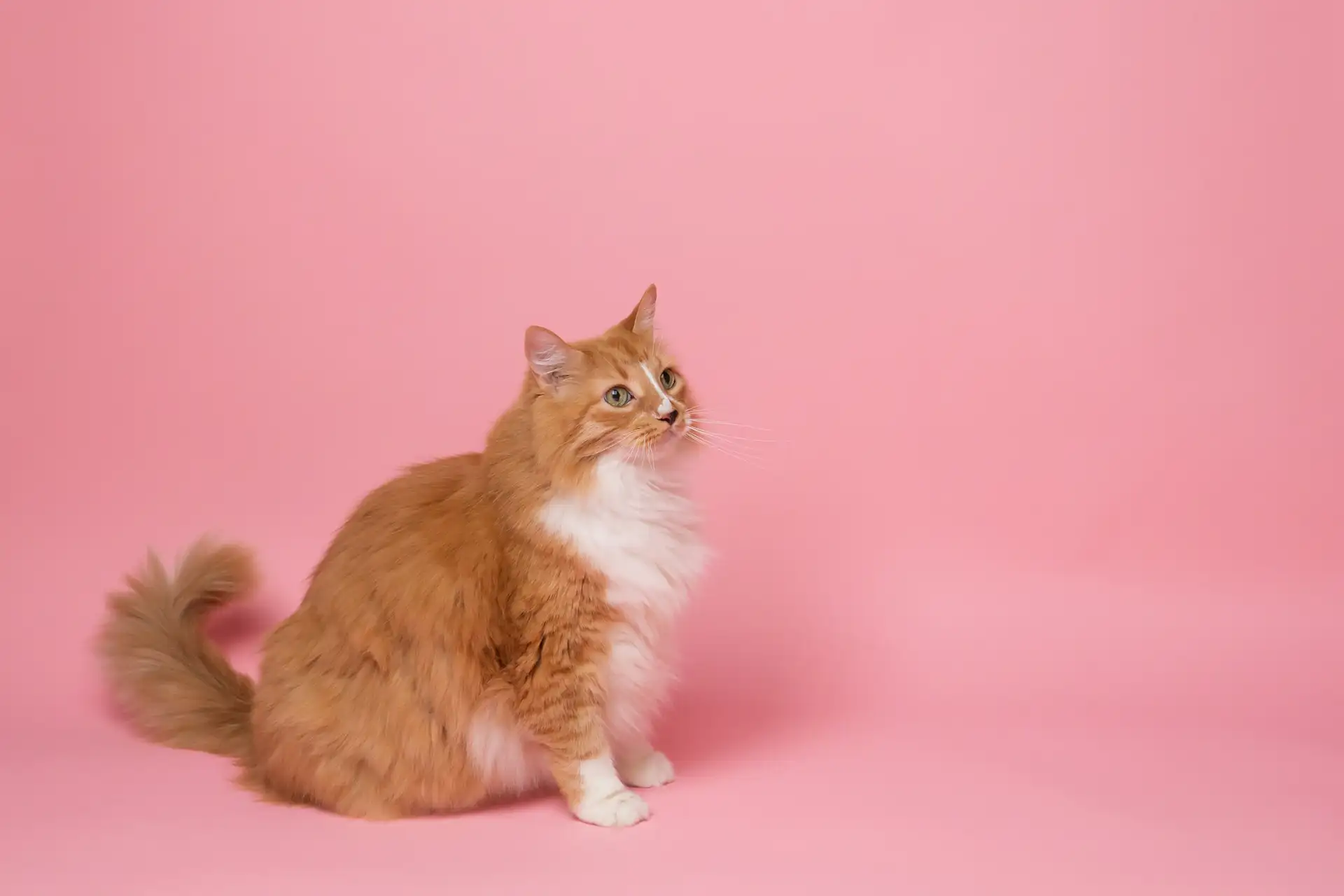Type 2 diabetes: The most common form in cats
Type 2 diabetes is the most common form in cats, characterized by:- Cells becoming resistant to insulin
- Reduced insulin production by the pancreas
- Inability to regulate blood sugar levels properly
Risk Factors for Feline Diabetes Mellitus
Several risk factors increase your cat’s chances of developing diabetes:- Obesity
- Age (typically middle-aged to senior cats)
- Male sex
- Neutered status
- Physical inactivity
- Specific breeds (Burmese, Maine Coon, Russian Blue, Siamese, Norwegian Forest)
Consequences of Untreated Diabetes in Cats
High blood glucose levels can severely impact your cat’s health. When left untreated, elevated blood sugar causes:- Damage to vital organs
- Weakened immune system
- Increased risk of infections
- Potential nerve damage
- Life-threatening complications like diabetic ketoacidosis (DKA)
Recognizing the Symptoms of Feline Diabetes
Early detection of feline diabetes starts with recognizing key symptoms in your cat. Here are the primary signs you need to watch for:1. Increased Thirst and Urination
- Your cat drinks excessive amounts of water (polydipsia)
- Frequent trips to the litter box (polyuria)
- Urine output significantly higher than normal
- Accidents outside the litter box
2. Weight Changes and Appetite
- Noticeable weight loss despite eating normally or more than usual
- Increased hunger in early stages
- Decreased appetite as the condition progresses
- Visible muscle wasting, particularly along the spine and hind legs
3. Behavioral and Physical Changes
- Lethargy and reduced activity levels
- Weakness in hind legs
- Poor coat quality – fur appears dull or unkempt
- Changes in sleeping patterns
- Irritability or unusual aggression
- Vomiting episodes
- Walking flat on their hocks
Diagnosing Feline Diabetes: Tests and Procedures
Accurate diagnosis of feline diabetes requires a combination of clinical observations and laboratory testing. Your veterinarian will conduct blood and urine tests to measure glucose levels when diabetes is suspected. A single blood glucose reading might not tell the complete story. Stress-induced hyperglycemia can cause temporary spikes in blood sugar levels during vet visits. This makes fructosamine testing essential for a definitive diagnosis. Fructosamine testing provides insights into your cat’s average blood glucose levels over the past 2-3 weeks. This test measures proteins in the blood that have bonded with glucose, creating a more reliable indicator of long-term blood sugar control.Key Diagnostic Procedures
Key diagnostic procedures include:- Blood glucose measurement
- Urinalysis to check for glucose spillover
- Complete blood count
- Biochemistry panel
- Fructosamine testing
- Physical examination
Treatment Approaches for Managing Feline Diabetes
Insulin therapy is the main treatment for cats with diabetes mellitus. Your veterinarian will prescribe specific insulin types based on your cat’s individual needs and response to treatment. The administration of insulin requires careful attention to timing and technique. You’ll need to:- Store insulin properly in the refrigerator
- Roll the vial gently before use
- Draw the exact prescribed dose
- Inject subcutaneously in different spots to prevent tissue damage
Monitoring Requirements:
- Regular blood glucose checks
- Tracking water consumption
- Observing eating habits
- Watching for signs of low blood sugar
- Weekly weigh-ins
Exploring Oral Medications and Newer Treatment Options for Diabetic Cats
Recent advancements in veterinary medicine have introduced promising alternatives to traditional insulin therapy. SGLT2 inhibitors represent a groundbreaking class of oral medications for managing feline diabetes. These medications work by:- Blocking glucose reabsorption in the kidneys
- Promoting glucose excretion through urine
- Reducing blood sugar levels without insulin dependence
- Once-daily oral administration
- Potential reduction in insulin requirements
- Improved blood glucose control
- Suitable for cats resistant to insulin injections
- Kidney function
- Hydration levels
- Blood glucose concentrations
- Overall health status
The Role of Diet Management in Controlling Feline Diabetes
Diet management is crucial for controlling blood sugar levels in cats with diabetes. A carefully planned diet can help keep blood sugar stable, maintain a healthy weight, and increase the likelihood of remission.Key Components of an Effective Diabetic Cat Diet:
- Protein-Rich Foods: High-quality protein sources support muscle maintenance and healthy metabolism.
- Limited Carbohydrates: Reduced carb intake helps prevent blood sugar spikes.
- Balanced Fat Content: Moderate fat levels provide energy without excess calories.
- Consistent Portion Sizes: Regular, measured meals help maintain stable blood glucose.
Wet Food vs. Dry Food: Which is Better for Diabetic Cats?
Wet food is generally a better option for diabetic cats compared to dry food. Here’s why:Benefits of Wet Food:
- Natural moisture content aids hydration
- Lower carbohydrate levels (typically 5-10%)
- Better protein-to-carb ratio
- Helps maintain healthy weight
- Increased satiety between meals
Challenges with Dry Food:
- Higher carbohydrate content (often 30-40%)
- Less moisture content
- Can lead to weight gain
- May cause blood sugar fluctuations
Recommended Feeding Pattern:
- Feed same amounts at fixed times daily
- Space meals 10-12 hours apart
- Measure portions accurately
- Avoid free-feeding
Maintaining a Healthy Weight Through Diet and Exercise in Diabetic Cats
Weight management plays a vital role in controlling feline diabetes. A structured approach to weight loss combines precise portion control with regular physical activity.Portion Control Strategies:
- Measure food portions using a kitchen scale
- Feed smaller meals 3-4 times daily
- Track daily caloric intake
- Avoid free-feeding
Exercise Tips for Diabetic Cats:
- Schedule 10-15 minute play sessions twice daily
- Use interactive toys like wand toys or laser pointers
- Create vertical spaces for climbing
- Set up food puzzles to encourage movement
Safe Weight Loss Guidelines:
- Target 0.5-2% body weight loss per week
- Regular weigh-ins to monitor progress
- Adjust portions based on weight trends
- Maintain muscle mass through protein-rich foods
Monitoring Blood Glucose Levels at Home: A Guide for Cat Owners
Regular blood glucose monitoring at home is essential for managing your diabetic cat’s health effectively. You can use specialized feline blood glucose meters designed specifically for cats, which require smaller blood samples than human glucose meters.What You Need to Monitor Blood Glucose at Home
Here’s what you need to monitor blood glucose at home:- A pet-specific glucose meter
- Sterile lancets
- Test strips
- Treats for rewarding your cat
Ideal Testing Sites
The ideal testing sites include:- Ear margins
- Paw pads
- Inner lip
Recommended Testing Schedule
Recommended Testing Schedule:- Before insulin injections
- 2-4 hours after insulin administration
- When your cat shows unusual symptoms
- During diet changes
The Role of Veterinarians in Managing Feline Diabetes: From Diagnosis to Long-Term Care
Your veterinarian serves as your primary partner in managing your cat’s diabetes journey. They provide essential services at every stage:Initial Diagnosis and Treatment Planning
- Conducting comprehensive blood tests and urinalysis
- Creating personalized insulin protocols
- Developing tailored diet plans focusing on low-carbohydrate options
Ongoing Care and Monitoring
- Regular check-ups to assess treatment effectiveness
- Adjusting insulin dosages based on blood glucose curves
- Evaluating your cat’s weight and muscle condition
Education and Support
- Teaching proper insulin injection techniques
- Demonstrating blood glucose monitoring methods
- Providing guidance on wet food diet selection
Emergency Care
- Managing complications like diabetic ketoacidosis
- Treating hypoglycemic episodes
- Addressing concurrent health issues
Long-Term Management
- Quarterly health assessments
- Fructosamine level monitoring
- Regular dental check-ups to prevent infections
- Weight management support
FAQs (Frequently Asked Questions)
What is feline diabetes mellitus and how does it affect cats?
Feline diabetes mellitus is a condition characterized by insufficient insulin production or utilization in cats, leading to high blood glucose levels. This imbalance affects the overall health of cats, causing symptoms like increased thirst, frequent urination, weight loss, lethargy, and muscle wasting.What are the common symptoms to recognize feline diabetes in cats?
Common symptoms of feline diabetes include polydipsia (increased thirst), polyuria (frequent urination), unexplained weight loss despite a good appetite, lethargy, behavioral changes, and muscle wasting. Recognizing these signs early is crucial for timely diagnosis and management.How is feline diabetes diagnosed through tests and procedures?
Diagnosis of feline diabetes relies on clinical signs along with laboratory tests such as blood glucose level measurement and fructosamine testing. Fructosamine testing helps assess long-term blood glucose control in diabetic cats, providing a comprehensive view of their condition.What treatment options are available for managing feline diabetes?
Insulin therapy remains the mainstay treatment for diabetic cats. These insulins are administered via injections under veterinary guidance. Additionally, newer oral medications like have been approved to promote glucose excretion through urine as adjunct treatments.How does diet management contribute to controlling feline diabetes?
Diet management plays a vital role in regulating blood sugar levels in diabetic cats. Low-carbohydrate diets, especially wet food diets over dry food, are preferred to help maintain stable glucose levels. Controlled portion sizes and regular exercise assist in maintaining a healthy weight, which is essential for effective diabetes control.Why is regular blood glucose monitoring and veterinary support important in feline diabetes care?
Regular blood glucose monitoring at home using specialized devices designed for cats allows owners to track their pet’s condition accurately. Veterinarians play a crucial role from initial diagnosis through long-term care by providing treatment plans, monitoring progress, adjusting therapies as needed, and offering ongoing support to ensure optimal management of feline diabetes.Contact Our Oshawa On Veterinary Hospital
Are you looking for a great vet near me around Oshawa, ON? Your search is over! Please feel free to contact us with all of your kitty’s veterinary care needs. We’re here to help! And in the meantime, visit our Service page here for more insight about our clinic and the animals we treat.This blog is meant to be informational only. Always consult with your veterinarian for the right medical advice, diagnosis, or treatment plan for your pet and follow their advice.



